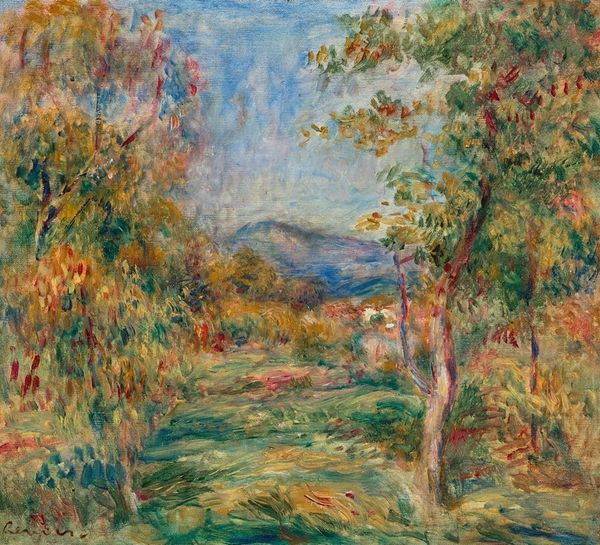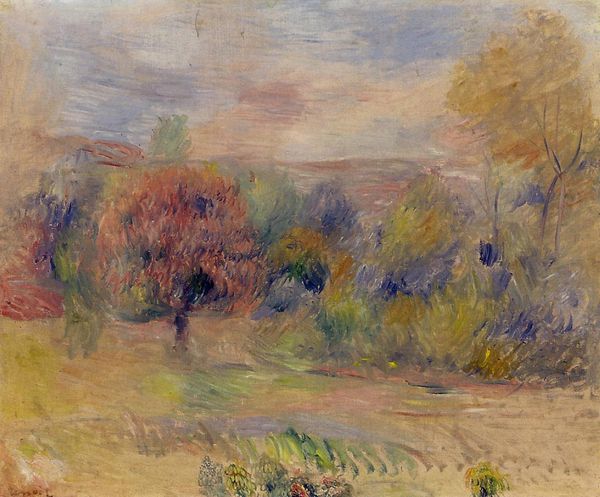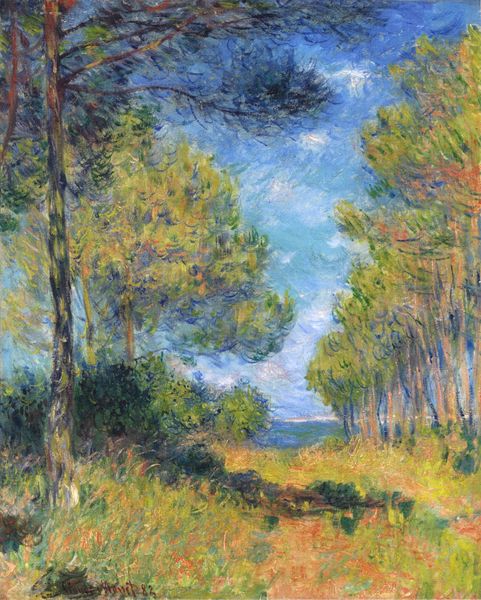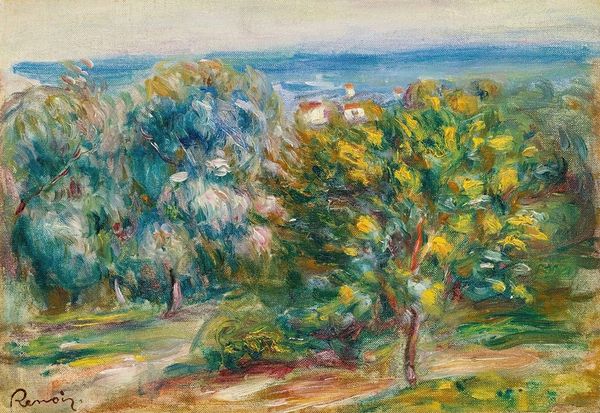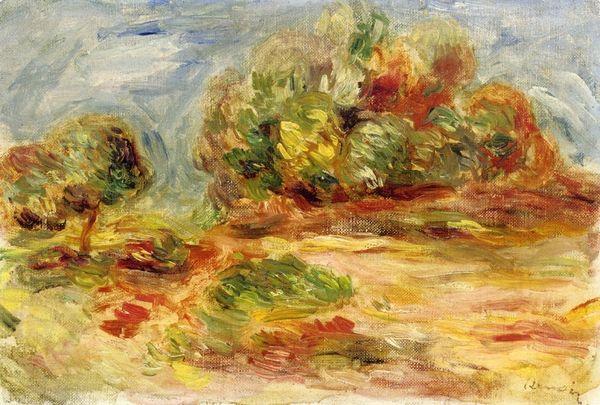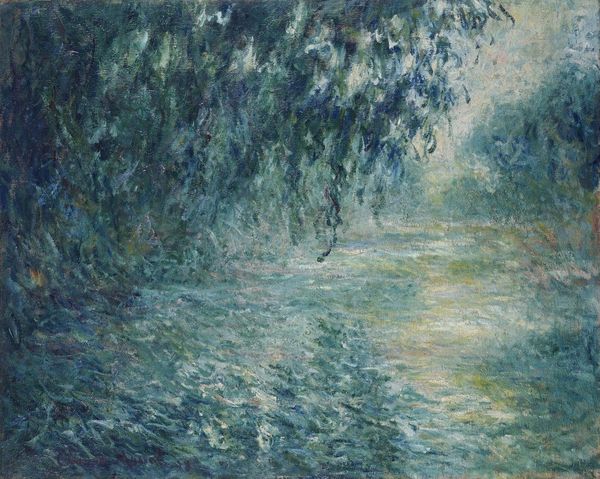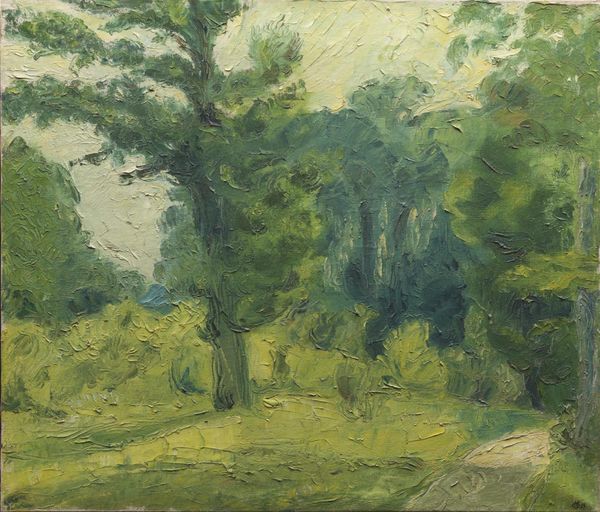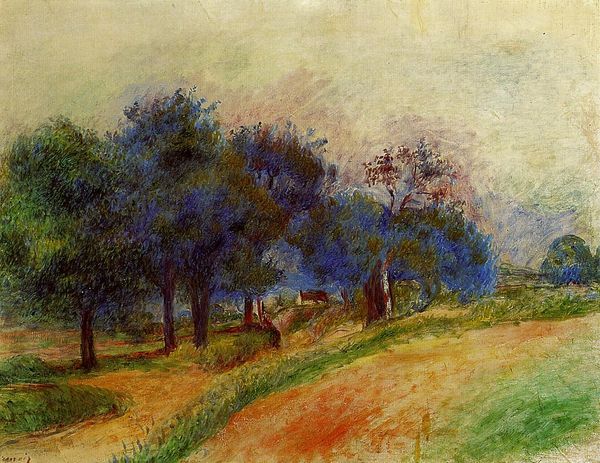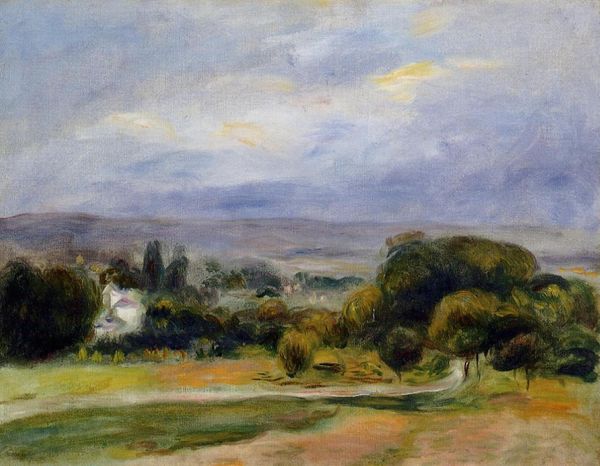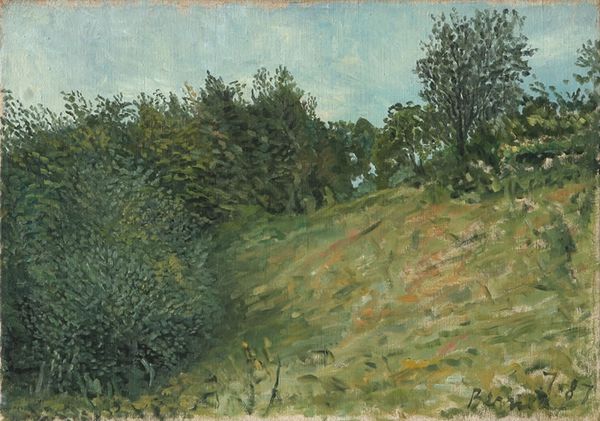
Copyright: Public Domain: Artvee
Editor: Here we have Renoir’s "The Auvers Valley on the Oise River," painted sometime between 1884 and 1906, a lovely watercolour landscape. It feels so light and airy, almost like a memory fading at the edges. What strikes you most about this piece? Curator: You know, it’s interesting you say that about memory. It reminds me of those lazy summer days, gazing out from under the shade of a tree. What grabs me is Renoir’s way of capturing the essence of a place. It’s less about the specific details, wouldn't you agree? It’s more about a feeling, the light, the hazy distance. Like he dipped his brush in pure atmosphere. Editor: Definitely! The hazy quality almost makes it feel timeless. Do you think he intentionally left out sharper details to achieve that effect? Curator: I think so. Consider how the Impressionists, especially Renoir, were drawn to *plein air* painting. He wasn’t just documenting a scene; he was trying to capture a fleeting moment, a personal response. Perhaps he squinted just so to soften the lines! Maybe he even half-closed his eyes. Editor: That’s such a cool image! I see it now. How that helps capture the feeling. Curator: Isn't it delightful how watercolour does just that! The trees sort of cradle the valley. Do you think this invites the viewer in? Or perhaps creates distance with that foreground screen of shrubbery. Editor: Good question! Maybe a bit of both? An invitation but with a respectful boundary. It makes me feel like I’m peeking into someone else's tranquil moment. Thanks, I love that peeking in image. Curator: Exactly. A private paradise observed from afar, captured in watercolor’s ephemeral embrace. Editor: I'll never see a watercolour the same way!
Comments
No comments
Be the first to comment and join the conversation on the ultimate creative platform.
